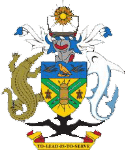One of the most tragic and devastating tsunami in recent history occurred on 26th December 2004 just off the Indonesian province of Bande Aceh. Waves up to 30 m high battered the coastlines of Indonesia, Thailand, India, Sri Lanka and the Maldives, leaving about 300,000 people dead or missing. Whilst destructive tsunamis such as this are relatively infrequent, tsunami are common in the Pacific Ocean and can affect all of the Pacific island countries. This is because the Pacific basin is surrounded by the “Ring of Fire”, a series of tectonic plate boundaries associated with high earthquake and volcanic activity.
What is a Tsunami?
A tsunami (a Japanese word meaning “harbour wave”) is a series of waves, travelling at speeds of over 800 km/h in the deep ocean and often going unnoticed. They travel harmlessly until they reach the shallow water of a coastline where they slow down and steepen, cresting to heights of more than 10 m and can crash with devastating force across the shore, flooding low-lying areas and causing death and severe destruction.
Any disturbance that shifts a large volume of water away from its normal position can generate a tsunami.
The most common cause of a tsunami is an offshore earthquake, which can cause the sea floor to abruptly lift or subside. This can disturb the overlying water column and possibly lead to a tsunami.

Backwash - Another danger from Tsunami waves is that they bring a large volume of seawater onto the land. When the water flows back out it may carry people out to sea.
Wrap around - Tsunamis tend to align themselves parallel to the shoreline so they wrap around headlands, sand spits and even whole islands, so that it can be just as dangerous on coasts not facing the tsunami source.
Tsunami Warning
The Pacific Tsunami Warning Centre (PTWC) in Hawaii detects and provides warnings of potentially damaging Pacific wide tsunami. While warnings of far-source / ocean-wide tsunami can be given well in advance of the tsunami arriving, unfortunately, warnings cannot be given about a near-source tsunami because it can reach shore within 10-20 minutes of the earthquake or eruption that caused it. This was the case with the 17 July 1998 event in Aitape, Papua New Guinea.
Similarly, a submarine volcanic eruption creates an upward force that lifts the water column above the volcano leading to the generation of a tsunami. A submarine landslide can also generate a tsunami from the sudden down-slope movement and the slumping of sea floor sediments. These landslides are most often the result of an earthquake and are occasionally due to a volcanic eruption. In addition, coastal landslides and volcanic cone collapses that send tons of debris spilling into the water can also result in tsunami.
Tsunami Hazards
Coastal inundation and erosion
Tsunami can severely impact coastal areas, completely inundating low-lying coastal areas, destroying buildings, damaging infrastructure, flattening trees, churning up soil and even washing away entire villages. The inundation can also cause severe coastal erosion and affect areas upstream from the coast since tsunami waves can travel up rivers and streams from the ocean
Wave speed/force
Tsunami waves travel at 36-54 km/h in shallow water, faster than most people can run. This enormous momentum means that the force of the waves can move large rocks weighing several tons, along with boats and other debris. People can be caught up in the wave and tossed about, choking on seawater and suffering injuries due to the debris.
Debris
During major tsunami, fatalities and damage result not only from the force of the waves themselves, but also from the accompanying debris churned up as the wave surges across the shore, such as broken glass, torn metal, parts of buildings and uprooted trees.
